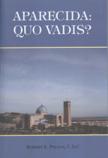Mission: A Joyful Challenge
The fifth general conference of the Latin American bishops (Celam) in 2007 was a significant event in the history of the church in the Western Hemisphere. Its report, Disciples and Missionaries of Jesus Christ: That Our People May Have Life in Him, may be among the most interesting missiological texts to appear in the first decade of the 21st century. This volume of essays is an important English-language commentary on the event, its texts and context. After reading it and the full text of the assembly, it is hard to imagine that some Catholic leaders 50 years ago felt it a mistake to consider Latin America a mission territory, because of 500 years of evangelism and hegemony. The pilgrimage of conversion is evident in every paragraph of the report of the bishops.
This interpretative volume is particularly significant because of the timeliness of the topic and the event, the quality of the essays, and the historic fact of U.S. bishops’ formal involvement for the first time. The articles are written by interdisciplinary specialists in a variety of fields, studying the Latin American church. The opening essay traces the development of Celam’s theology of mission from Medellín, Colombia (1968), and Puebla, Mexico (1979), through the 2007 meeting in Brazil, noting the return to the “observe, judge, and act” methodology: discerning the “signs of the times” of the earlier Latin American approaches to biblical reflection and action. The 1992 meeting in Santo Domingo was strongly influenced by the Roman Curial participants and put less emphasis on social analysis.
Subsequent essays, from a continental perspective and from that of U.S. Hispanics, treat the preferential option for the poor, Christian base communities, global markets and economics, the understanding of structural sin, indigenous and African-American dimensions of mission, the story of the marginalization of liberation theologians and their return to the table, ecumenism and Pentecostalism, and the vista of a pluralistic future for a once dominant Catholic sector of the world. The two essays on the economic analysis of the bishops are particularly important as we realize the global implications of financial transitions in the dominant capitalist sectors, like the United States. The initial address of Pope Benedict XVI, the final message and three appendices with selections from the final text enhance the usefulness and interest of the volume.
Celam’s general conferences are no longer the affair of the Latin American church alone. Since the 1997 Synod of Bishops for America and John Paul II’s post-synodal statement Ecclesia in America of 1999, the church looks at the Western Hemisphere as the “Church in America” in the singular. The inclusion of an article by Ricardo Ramírez, bishop of Las Cruces, N.M., a member of the planning committee for CELAM V, and the fact that the representative of the U.S.C.C.B. (its president, Bishop William Skylstad) was a full voting member underscore the historic character of the event as another step in building Catholic solidarity in the hemisphere.
There are those who lament the weakness of the ecumenical commitment, the lack of stronger support for women’s roles in the church and the toning down of support for base communities. However, the ability of the bishops to continue their visionary commitment to continental leadership and their prophetic critique of society, especially in these changing times, holds out promise for new energy in the region.
We can only hope that Aparecida is but the first of many reflections to be published on this event and the state of mission in the Western Hemisphere today.
This article also appeared in print, under the headline “Mission: A Joyful Challenge,” in the December 1, 2008, issue.








